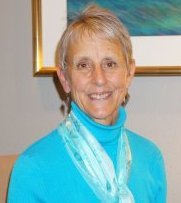

September 11, 2001 dawned while we were in the Strawberry Wilderness in Eastern Oregon. Of course, none of us will ever forget where we were on that day and how we reacted to the tragedy that had befallen our country. I woke up that morning and was standing in line for a porta-potty with hundreds of other cyclists when I heard the news of the terrorist attack. Little did I know that my own personal 9-11 was little more than three months away.
Leading up to Cycle Oregon, I had been noticing more frequent urination, diarrhea, abdominal bloating, and lots of gas — all of which I attributed to too much Gatorade and the anticipation of the “big ride.” I discovered Gas-X and self-medicated with few results. During the bike ride, I also noticed similar symptoms, but with the news of the 9-11 attack, I brushed these aside.
Three months later (December 2001), the symptoms continued, and I noticed more bloating and diarrhea. I was to leave for my son’s graduation at the University of Hawaii but decided I should first make a quick trip to my general practitioner to get something for these annoying symptoms. When I described the symptoms, she thought it might be IBS, irritable bowel syndrome, and gave me a prescription.
The two weeks in Honolulu were miserable from a physical standpoint — more gas, bloating, and diarrhea. At this point I began to fear the worst and considered the possibility of colon cancer which had killed my father at age 59. Yet, I had had a colonoscopy several years before. What was going on with my body? Could this just be post-menopause?
On December 31, 2001, I saw my regular gynecologist for my annual exam. During the pelvic exam she found a mass the size of a large grapefruit, which she thought might be a fibroid. She immediately ordered a transvaginal ultrasound. The ultrasound technician explained that the results would be sent to my doctor and that I would be notified in about a week. Happy New Year!
No sooner had I returned home from the appointment than I heard my gynecologist’s voice on my message machine, “Please call me right away.” She explained that the ultrasound showed that the growth was on the left ovary and it was not a cyst. She added that she had made an appointment for me that week with an outstanding gynecologic oncologist in Portland. I was to report to the hospital lab for a CA125 blood test. The CA125 test registered 1600; the normal range is below 30.
Three days after the appointment with the gynecologic oncologist, I had a complete hysterectomy and debulking surgery. I woke up to the diagnosis of Stage IIIC ovarian cancer. The cancer had already metastasized to my lymph nodes. The gyn onc connected me with a medical oncologist in Vancouver, and thus began the chemo journey — the standard six rounds of carboplatin and taxol. After that, both my doctors recommended that I continue with 12 more months of a consolidated taxol treatment, which I completed in April 2003. I have been extremely fortunate to remain in remission since then.
So, how does a healthy 57 year old woman who exercised regularly, ate well, and was in tune with her body suddenly receive a diagnosis of stage III ovarian cancer? I have learned since that most women like myself, who are diagnosed with ovarian cancer, did experience some kind of persistent gastrointestinal or urinary symptoms. I had those symptoms over a period of months before it dawned on me that it might be more than training for the bike trip, or stress, or post-menopause.
Since my diagnosis there has been much more education and awareness about signs and symptoms of ovarian cancer. It is so important that all women are aware of these symptoms and listen to their own bodies. That is what led me in 2002 to my first Ovarian Cancer National Alliance (OCNA) conference in Washington DC while I was still in treatment.

The conference changed my life! I realized that there were lots of other ovarian cancer survivors across the country who not only wanted to learn more about the disease and its treatment, but also wanted to advocate for more funding for ovarian cancer research. The bonds that were formed at that conference gave me the energy and motivation to connect with another Vancouver, WA ovarian cancer survivor, Diane Elizondo.
Together we started the Ovarian Cancer Alliance of Oregon and SW Washington (OCAOSW), a partner member group of the Ovarian Cancer National Alliance. The mission of OCAOSW is education, awareness, support, and advocacy.
The past 12 years have been a journey I never expected. I went through a period of depression and anxiety for months after my diagnosis — was my life over? But, through the support of other survivors at both the Southwest Washington Medical Center and the Legacy Good Samaritan gynecologic support groups, and the OCNA conferences, I found that life does go on after this diagnosis.

Now, in January 2014, I am proud to be the new President of the Board of Directors for the Ovarian Cancer National Alliance (OCNA) in Washington, DC. I am the president of the board of the Ovarian Cancer Alliance of Oregon and SW Washington as well, and actively coordinate and participate in OCNA’s Survivors Teaching Students (STS™) program, which involves speaking before the local medical, nursing and pharmacy students about ovarian cancer. I am married to Terry, and have two grown sons and two grade school granddaughters. I enjoy spending time with family and friends, trying new restaurants, yoga, cycling, swimming, travelling, and walking my dog.
